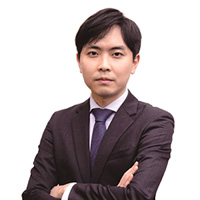[Herald Interview] I wanted to do something: Swedish nurse
By Choi Si-youngPublished : June 25, 2020 - 08:24

Sweden, one of the six countries that provided medical support for South Korea during the 1950-53 Korean War, fielded the largest group of medical personnel at the onset of the conflict to alleviate the humanitarian crisis.
Nurse Jutta Andersson volunteered to join the 1,200-strong Swedish Red Cross dispatch, even though she said she had to “look in an atlas” to see where Korea was.
“I first heard the appeal for Korea on the radio, that the government had decided to contribute with sending a field hospital and encouraging Swedes to apply for service,” said Andersson, now 92, in an interview with The Korea Herald.
“I was affected by the speech and wanted to do something.”
On Sept. 23, 1950, she landed in the southeastern city of Busan to work at a makeshift field hospital there. The situation was horrific, she recalled -- no water, no electricity, no drainage and no medical equipment to treat the wounded.
But 60 UN patients arrived a day after her team got there.
Nurse Jutta Andersson volunteered to join the 1,200-strong Swedish Red Cross dispatch, even though she said she had to “look in an atlas” to see where Korea was.
“I first heard the appeal for Korea on the radio, that the government had decided to contribute with sending a field hospital and encouraging Swedes to apply for service,” said Andersson, now 92, in an interview with The Korea Herald.
“I was affected by the speech and wanted to do something.”
On Sept. 23, 1950, she landed in the southeastern city of Busan to work at a makeshift field hospital there. The situation was horrific, she recalled -- no water, no electricity, no drainage and no medical equipment to treat the wounded.
But 60 UN patients arrived a day after her team got there.

“We had to improvise. Everybody worked round the clock during those first weeks.”
Asked to share her single most powerful memory of the war, Andersson said images of “wounded North Korean POWs” still lingered in her mind.
“They were badly wounded and miserable. … We treated them as any other patient and they were very, very grateful to us,” she said, adding that the North Koreans had come to the field hospital in early October, just a few weeks after the medical staff landed.
“One of the North Koreans also wrote a letter to the Swedish king,” she said.
The Swedish Red Cross continued to treat soldiers -- both South and North Koreans -- and civilians, even after the conflict ended in 1953.
The medical team officially withdrew from South Korea in April 1957, having laid the groundwork for the birth of the National Medical Center in Seoul a year later.
Asked to share her single most powerful memory of the war, Andersson said images of “wounded North Korean POWs” still lingered in her mind.
“They were badly wounded and miserable. … We treated them as any other patient and they were very, very grateful to us,” she said, adding that the North Koreans had come to the field hospital in early October, just a few weeks after the medical staff landed.
“One of the North Koreans also wrote a letter to the Swedish king,” she said.
The Swedish Red Cross continued to treat soldiers -- both South and North Koreans -- and civilians, even after the conflict ended in 1953.
The medical team officially withdrew from South Korea in April 1957, having laid the groundwork for the birth of the National Medical Center in Seoul a year later.

The center, the country’s first hospital to be designated to treat infectious disease, is now a major battlefield in South Korea’s fight against the coronavirus pandemic.
The Swedish veteran said she still feels involved with South Korea because every year the Korean Embassy in Stockholm invites her to “dinners, cultural events and ceremonies.”
“This made me sort of involved, and I have all these years followed Korea and the situation there with great interest,” she said.
She mentioned the Ministry of Patriots and Veterans’ Peace Camp for Youth, a program for veterans’ grandchildren to help them learn about Korea, as something her grandchildren were grateful for.
“Very considerate of Korea,” she said upon learning that South Korea had weeks earlier sent masks and hand sanitizers to war veterans abroad, including those in Sweden, to assist them to combat the highly contagious pathogen.
She looked back on 2018, a year she called “so positive,” with the leaders of the two Koreas “embracing each other” at the inter-Korean border at their first summit in April that year.
“I hoped for a peaceful future,” she said. “Well, I still do.”
By Choi Si-young (siyoungchoi@heraldcorp.com)
The Swedish veteran said she still feels involved with South Korea because every year the Korean Embassy in Stockholm invites her to “dinners, cultural events and ceremonies.”
“This made me sort of involved, and I have all these years followed Korea and the situation there with great interest,” she said.
She mentioned the Ministry of Patriots and Veterans’ Peace Camp for Youth, a program for veterans’ grandchildren to help them learn about Korea, as something her grandchildren were grateful for.
“Very considerate of Korea,” she said upon learning that South Korea had weeks earlier sent masks and hand sanitizers to war veterans abroad, including those in Sweden, to assist them to combat the highly contagious pathogen.
She looked back on 2018, a year she called “so positive,” with the leaders of the two Koreas “embracing each other” at the inter-Korean border at their first summit in April that year.
“I hoped for a peaceful future,” she said. “Well, I still do.”
By Choi Si-young (siyoungchoi@heraldcorp.com)




![[Herald Interview] 'Trump will use tariffs as first line of defense for American manufacturing'](http://res.heraldm.com/phpwas/restmb_idxmake.php?idx=644&simg=/content/image/2024/11/26/20241126050017_0.jpg&u=20241126161719)

![[Health and care] Getting cancer young: Why cancer isn’t just an older person’s battle](http://res.heraldm.com/phpwas/restmb_idxmake.php?idx=644&simg=/content/image/2024/11/26/20241126050043_0.jpg&u=20241126145342)


![[Graphic News] International marriages on rise in Korea](http://res.heraldm.com/phpwas/restmb_idxmake.php?idx=644&simg=/content/image/2024/11/25/20241125050091_0.gif&u=)








